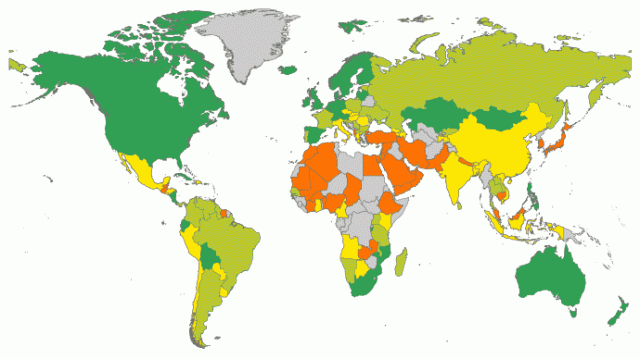According to the World Economic Forum (WEF), Iceland has been rated the country with the world’s smallest gender gap for five years in a row.
The rating means Iceland is the country where women enjoy the most equal access to education and healthcare. It is also where women are most likely to be able to participate fully in the country’s political and economic life.
Iceland is joined at the top of The Global Gender Gap Report, 2013 by its Nordic neighbors Finland, Norway and Sweden.
Overall, the gender gap narrowed slightly across the globe in 2013, as 86 of 133 countries showed improvements. However, “change is definitely slow”, says one of the report’s authors, Saadia Zahidi.
Europe has seven countries in the top 10 and the US is 23rd. The Philippines, at fifth, is the highest ranking Asian nation and Nicaragua is the highest-placed country from the Americas, at 10th.
The G20 group of leading industrial nations has no representative in the top 10, nor do the Middle East or Africa.
Top 10 countries:
1. Iceland
2. Finland
3. Norway
4. Sweden
5. Philippines
6. Ireland
7. New Zealand
8. Denmark
9. Switzerland
10. Nicaragua

Canada and the US come in at 20th and 23rd in the overall rankings. Both countries score well on education, where they are joint top alongside several other nations.
The US comes below Canada on politics, 60th to Canada’s 42nd place, but the US is ahead of its neighbour on economics, at sixth, and health, at 33rd, where Canada comes ninth and 49th respectively.
From Latin America, the three strongest-performing countries here are Nicaragua, Cuba and Ecuador, who all make the top 25 nations overall. Brazil’s position is unchanged from last year at 62nd.
“The health and education gap was closed here years ago. So it’s a continent ready to take off in terms of labor and political participation,” says Saadia Zahidi.
Northern European countries generally fare well compared with other countries. The WEF attributes this, in part, to policies that help people balance the twin demands of work and family life.
In southern Europe, the gender gap in education was reversed a number of years ago. However, there are lower levels of female participation in the workforce.
Middle East and North Africa is the region where some of the greatest gender inequalities exist. But the picture is far from uniform. For instance, the Gulf states have tended to invest heavily in female education, with a reverse gender gap taking place in the United Arab Emirates. Many more women than men are now finishing university here.
This contrasts with countries like Yemen, where levels of female education are very low.
Some of the Sub-Saharan African countries with the widest gender gaps can be found here; Chad and Ivory Coast all come close to the bottom of the overall rankings.
But southern Africa has some nations where a high level of labor force participation and political empowerment have helped bring them into the top 30 countries. Lesotho reaches 16th, South Africa is one place behind and Mozambique comes in at 26th.
In Asia, the Philippines stands out as the most equal country on the continent. This is down to closing the gap in health and education. The country also has a high level of economic participation, says the WEF.
China comes 69th overall, ahead of India at 101st. India’s low rank is due to poor scores from the WEF on education, health and economics.
How are the rankings made?
In order to compare relative gender gaps, the WEF creates an index from more than a dozen different sets of data. A score of one (or 100%) represents equality; zero (or 0%) represents inequality. Countries are then ranked on their results.
[youtube _hpQ3X2wlWU 650]
